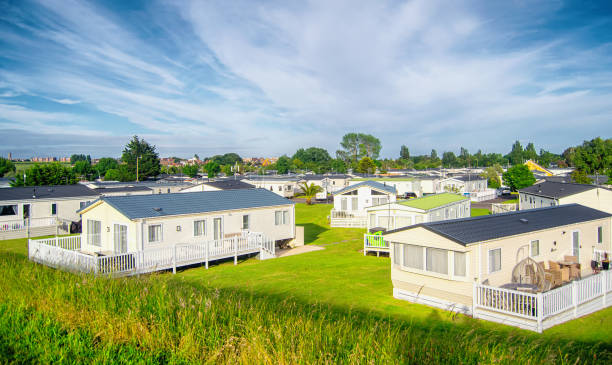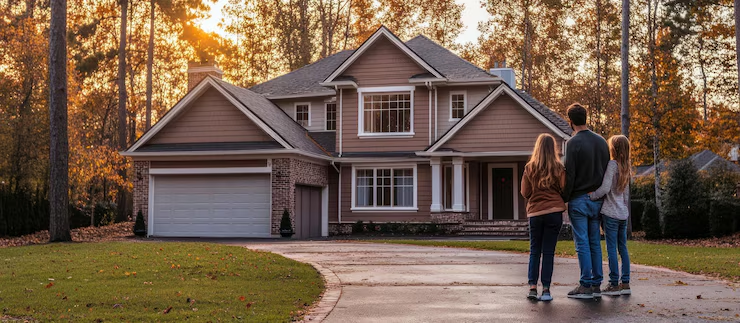A mobile home is a type of housing that is built in a factory and then transported to a specific location. Unlike traditional houses that are built on-site, mobile homes are constructed off-site and delivered in one or more pieces. These homes are also known as manufactured homes, especially if they were built after June 15, 1976, when the U.S. Department of Housing and Urban Development (HUD) created standards for their construction.
A Brief History of Mobile Homes
Mobile homes first became popular in the United States in the 1940s and 1950s. They offered a low-cost housing solution for families and individuals, especially those who moved often for work. Over time, mobile homes have evolved from simple trailers into well-designed living spaces with many modern features.
How a Mobile Home Is Built
Mobile homes are constructed inside large factories. This factory environment keeps materials safe from weather and reduces delays. Here are the basic steps:
- Design and Planning:
A floor plan is chosen or designed. Builders plan out plumbing, electrical systems, and materials. - Framing:
The frame is the base of the mobile home. It’s often made of steel for strength. The floor, walls, and roof are added to this frame. - Plumbing and Wiring:
Pipes and wires are installed before the walls and flooring are sealed. This ensures everything is neatly hidden and protected. - Insulation and Interiors:
Insulation is added for temperature control. Interior walls, ceilings, flooring, cabinets, and fixtures are installed. - Final Touches:
The home is painted, cleaned, and tested for safety.
After all this, the home is transported to its final location using trucks.
Single-Wide vs. Double-Wide Mobile Homes
There are different sizes of mobile homes, and the two most common types are:
- Single-Wide:
This type is about 14 to 18 feet wide and up to 80 feet long. It is one long unit that can be transported in one piece. - Double-Wide:
This is made of two sections joined together on-site. Together, they form a home about 28 to 36 feet wide.
Some homes are even larger and called triple-wide or multi-section homes.
How Do Mobile Homes Work After Installation?
Once the mobile home is delivered, it needs to be installed on a foundation. There are different types:
- Pier-and-Beam: Concrete blocks or steel piers support the home. This is common and cost-effective.
- Slab: A concrete slab serves as the foundation.
- Crawl Space or Basement: These provide extra storage or living space but are more expensive.
After setup, the home is connected to:
- Electricity
- Water and Sewer (or Septic)
- Gas (if applicable)
Once connected, the home functions like any traditional house. Residents can move in and enjoy their new living space.
Where Can You Place a Mobile Home?
Mobile homes can be placed on:
- Private Land:
If you own land and local laws allow it, you can place your mobile home there. - Mobile Home Parks:
These are communities designed for mobile homes. You rent or lease a lot and enjoy shared amenities like parks, pools, or clubhouses.
Before placement, it’s important to check zoning laws, building codes, and park rules.
Advantages of Mobile Homes
- Affordability:
Mobile homes usually cost less than traditional homes. This makes homeownership possible for more people. - Flexibility:
You can move a mobile home to a new location, although it’s not common to move them often. - Quick Setup:
Since they’re built in a factory, mobile homes can be ready faster than site-built homes. - Modern Features:
Many mobile homes have stylish interiors, energy-efficient systems, and quality materials.
Disadvantages of Mobile Homes
- Depreciation:
Mobile homes may lose value over time, especially if not placed on owned land. - Limited Financing:
It can be harder to get a traditional mortgage. Some lenders treat them like personal property rather than real estate. - Weather Risk:
In areas with strong storms or tornadoes, mobile homes can be more vulnerable. - Land Costs:
If you don’t already own land, you’ll need to rent or buy a place to put your home.
Are Mobile Homes Safe?
Yes, modern mobile homes built after 1976 must meet strict HUD safety codes. These standards ensure quality construction, fire safety, and energy efficiency. Many homes are also built to resist wind and heavy weather.
However, older homes built before 1976 might not be as safe. If you’re buying a used mobile home, check its age and condition carefully.
Mobile Homes vs. Modular Homes
People often confuse mobile homes with modular homes. Here’s the difference:
- Mobile Homes: Built on a steel frame and can be moved. Regulated by HUD.
- Modular Homes: Built in sections in a factory but placed on a permanent foundation. Regulated by local and state building codes.
Modular homes are considered the same as traditional site-built homes.
Maintenance and Upkeep
Just like any home, mobile homes need regular care. Here are some tips:
- Inspect the roof yearly and seal any leaks.
- Check skirting and insulation underneath.
- Clean gutters and ventilation systems.
- Keep plumbing systems winterized in cold climates.
- Ensure tie-downs and anchoring systems are secure.
Proper maintenance will help your mobile home last many years.
Conclusion
Mobile homes are a smart and flexible housing option for many people. They offer affordability, comfort, and convenience. While there are some downsides, modern mobile homes are much improved and often include many features of a regular house.
Whether you’re looking for a first home, a vacation property, or a downsized lifestyle, a mobile home can be a great choice—especially if you understand how it works and how to care for it properly.



